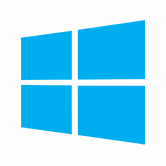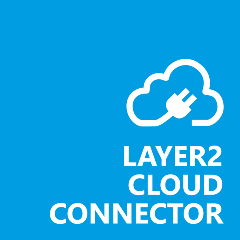Sync, integrate or migrate File Server to SharePoint
Migrate your File Server to SharePoint, NAS, Microsoft Office 365, or OneDrive for Business by using Layer2 Cloud Connector. Integrate both systems or synchronize your data. Close gaps with SharePoint and Office 365 out-of-the-box document synchronization, e.g. regarding support of network shares, the number of files allowed, file types allowed, file naming conventions, central management, and more.
We provide you with instructions for the migration of your File Server to SharePoint and you will learn about the benefits of connecting the systems with Layer2 Cloud Connector. We will also answer frequently asked questions.
Data integration, synchronization and migration between File Server and SharePoint made easy
Safe time by combining your data automatically in the background and synchronizing your File Server data one-way or two-way locally or in the cloud. If you want to find out in detail how to integrate and sync or migrate your File Server to SharePoint with Layer2 Cloud Connector, take a look at our video. You will find our step-by-step tutorial below.
Sync, integrate or migrate your file server to SharePoint step-by-step
You learn how to configure File Server and how to configure Layer2 Cloud Connector. We provide you with practical hints and known issues for a smooth start to help you to synchronize, integrate and migrate File Server to SharePoint.
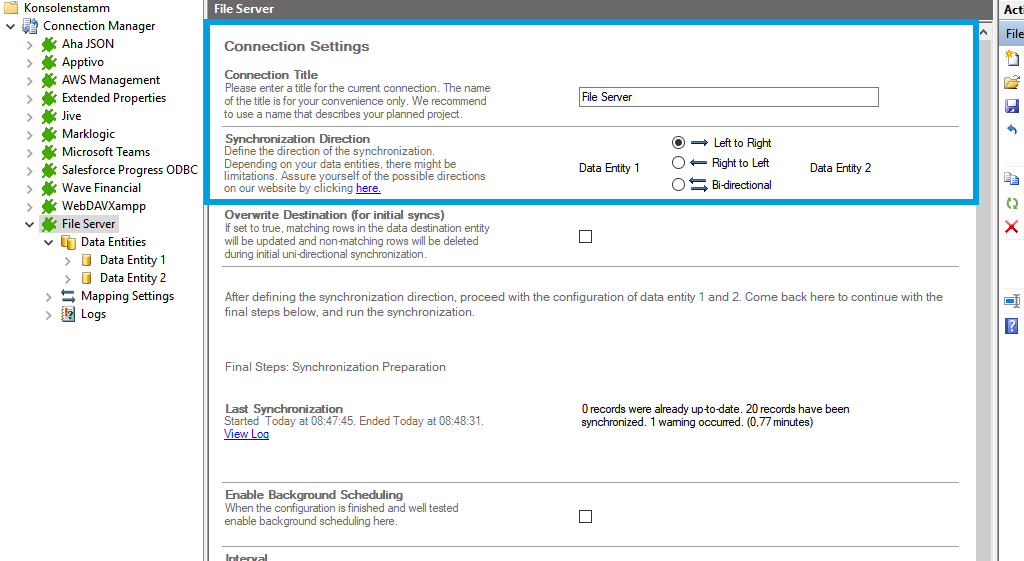
Step 1 - configure your File Server and Layer2 Cloud Connector
You only need the path to the local folder from your server where you store the files you want to synchronize. In our case a NAS server.
Create a new connection by using the Create New Connection option in the Actions pane (right-hand side). The new connection will appear at the bottom of the Connection Manager List (left-hand side). Click on your newly created connection to open the connection configuration settings.
Choose a meaningful name for your connection and replace the current "New Connection" Connection Title with it.
Connections to File Server can be bi-directional. An initial connection should always be uni-directional to assure that both data entities are identical before switching to bi-directional. Therefore, choose Left to Right as Direction. You can change this setting after your initial synchronization finished successfully.
Step 2 - configure the Data Entity 1
We will now set up our Data Entities. Go to the data entity “Data Entity 1” to open the configuration settings.
Choose a Data Entity Title. It is recommended to give your entities meaningful names to maintain an overview when you decide to set up multiple connections.
Select the Data Provider for File System from the data provider list. You can search for File System by typing into the selection box.
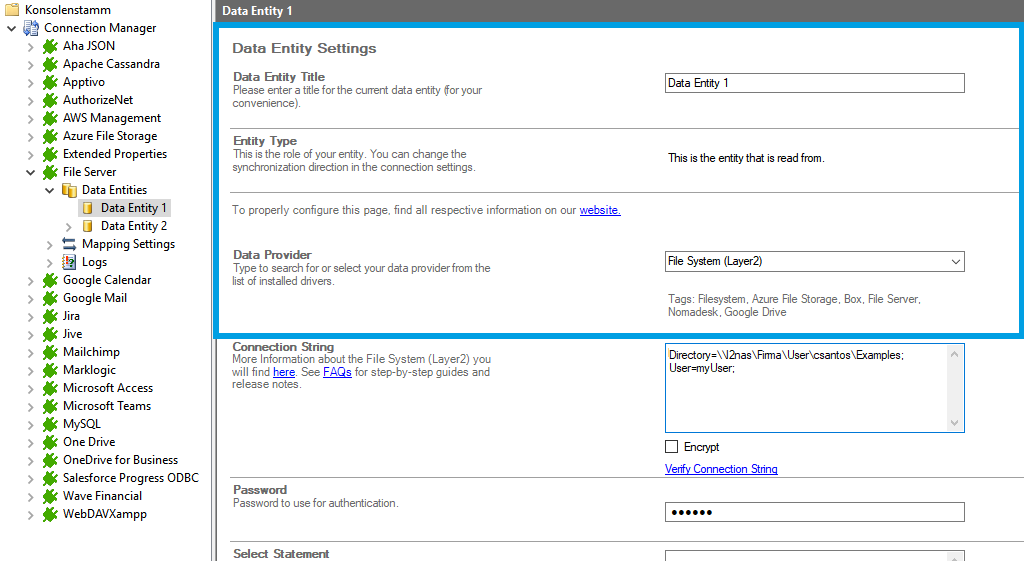
Directory=\\l2nas\Firma\User\csantos\Examples;User=myUser;
- "Directory=path;" this property defines the folder where the files are in you want to synchronize.
- "User=myUser;" this property defines an account that has access to the share.
Enter the user's password in the password field below the connection string. For the Connection String, we need the in step 1 mentioned information.
You can copy the connection string and adjust it to match your gathered information. Use the Verify Connection String option to evaluate if the provided connection string is valid.
The Select Statement text box is used to define specific data queries, e.g you can filter for specific filetypes. We do not need it in this case. Save your changes by using the right-hand pane option Save Changes.

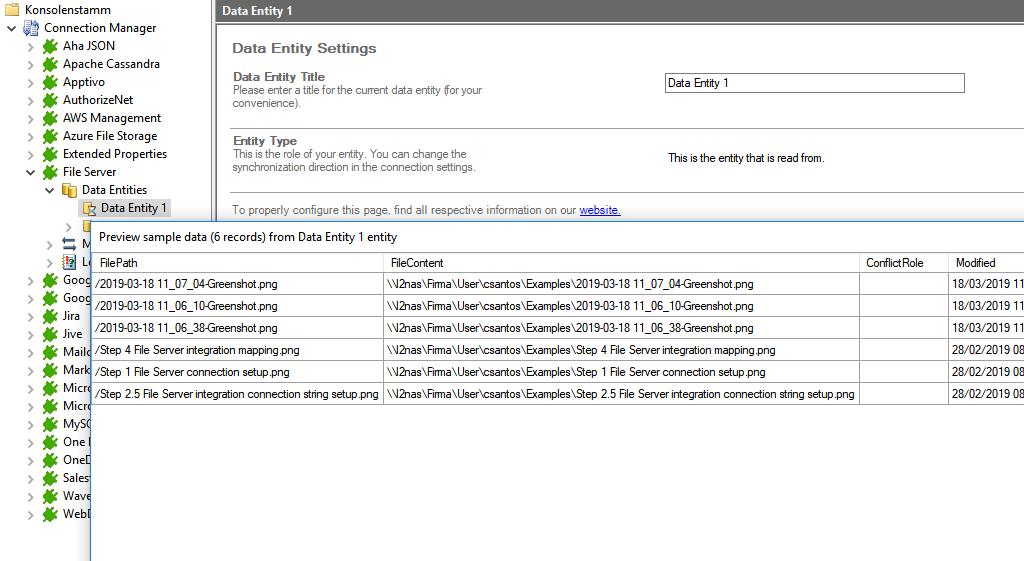
To check if all necessary columns are received, you can use the Preview Data option on the right-hand pane which will provide you with a pop-up window showing your sample data from your File Server entity.
Step 3 - configure the Data Entity 2 to sync, integrate or migrate File Server to SharePoint
We are going to send the files and folders to a SharePoint Online Document Libary. It's required that you set up this library prior to the next steps.
Use the left-hand pane to switch to the data entity "Data Entity 2". We will be using the Layer2 SharePoint Provider for this setup.
For more information about the SharePoint provider visit: https://www.layer2solutions.com/support/cloud-connector-faqs/layer2-csom-sharepoint-ado-net-provider.
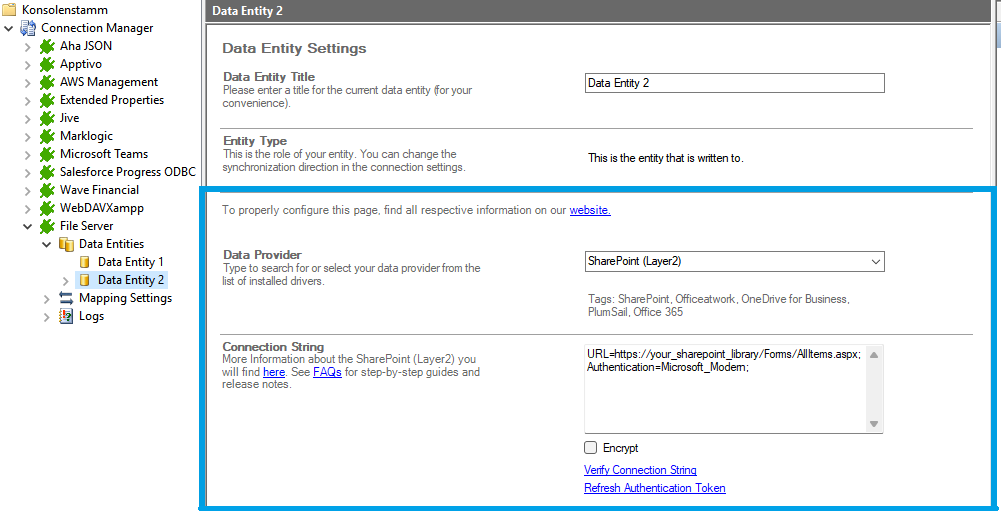
URL=https://your_custom_sharepoint_library_url/Forms/AllItems.aspx;Authentication=Microsoft_Modern;
- "URL=https://your_custom_sharepoint_url/Forms/AllItems.aspx;" this property defines the URL of your custom document library that will be addressed.
- "Authentication=Microsoft_Modern;" this property will determine the authentication method used. Microsoft_Modern is the default authentication method to access Microsoft Office 365 / SharePoint Online. For further authentication method you can consult the provider specifications linked above.
You can copy the Connection String which contains the minimum of required properties to connect to your custom SharePoint Online Document Library.
Click Refresh Authentication Token to authenticate and follow the authentication dialog.
Save your changes by using the right-hand pane option Save Changes.
In the next step, we will configure our mapping settings. Click on the Mappings option on the left-hand pane. If your fields from SharePoint are named identical to the fields from your source system, the Enable Auto Mapping option will match those columns. Disabling this option allows you to match your columns as needed. We enabled auto-mapping in our setup. Save your changes by using the right-hand pane option Save Changes.
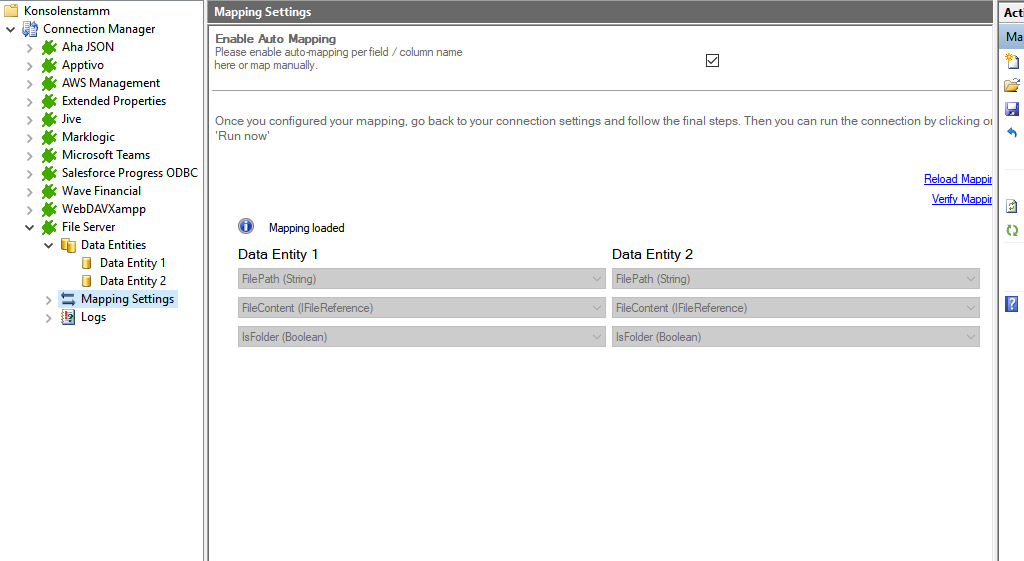
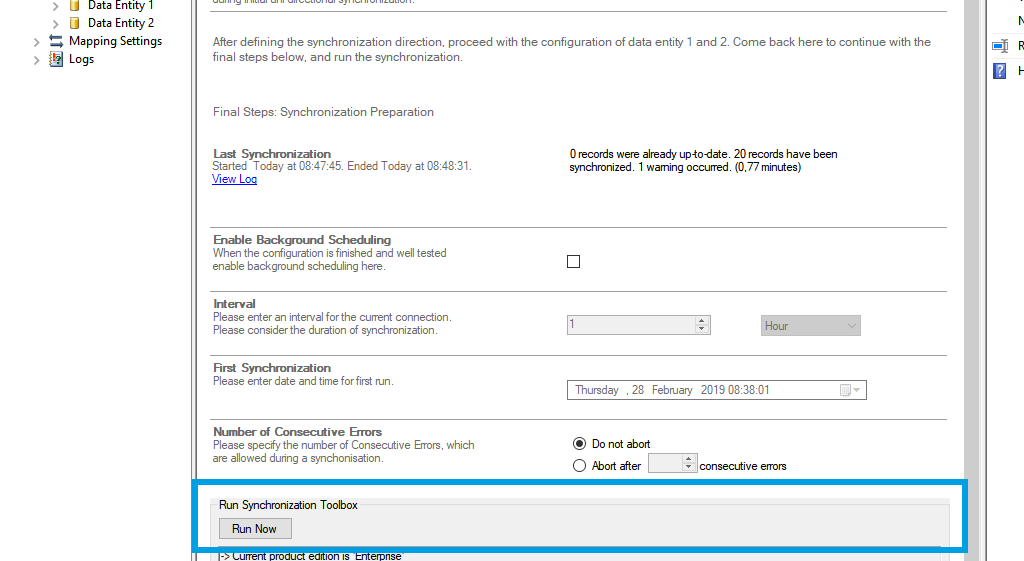
Step 4 - running your connection
To run your connection switch back to the main connection configuration node and use the Run Now Button located on the bottom of the setup page. The Run Synchronization Toolbox will also display the synchronization process.
You can integrate and synchronize your data or migrate File Server to SharePoint one time .
This is a data preview of the information we have accessed in our source entity.

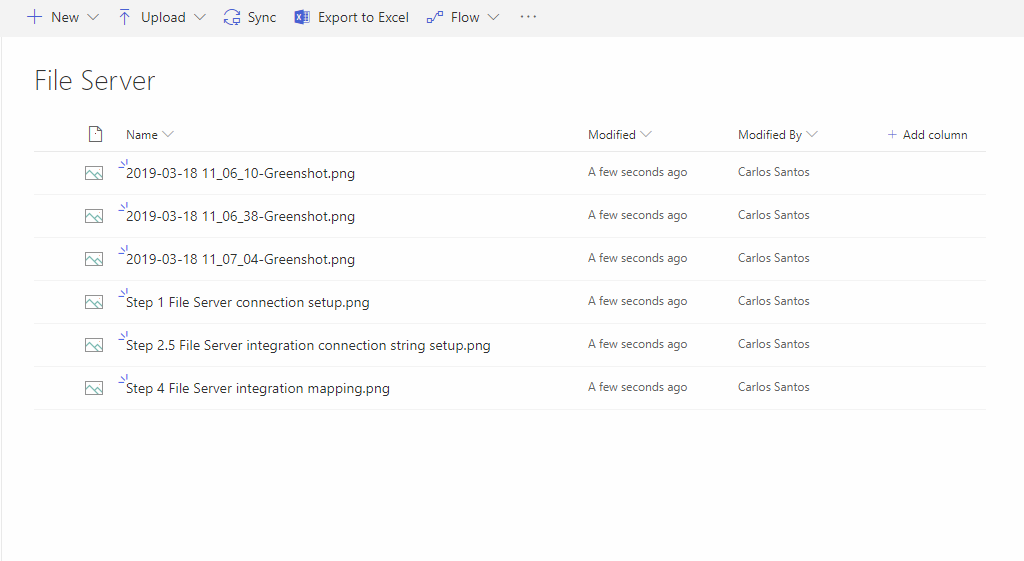
This will be the result in our SharePoint Online library after our initial successful synchronization.
If you want to use a bi-directional syncronization, you can now switch your connection directon after our first initial synchronization run finished successfully. After adjusting the direction, you should check your Mappings settings again because some systems might include read-only columns that cannot be mapped directly.
We also recommend to choose a Conflict Resolution that matches your enviroments needs. You can find out more about the different conflict resolutions in our Layer2 Cloud Connector User Documentation.
Hints and known issues about integrate, sync or migrate File Server to SharePoint using Layer2 Cloud Connector
Connection direction
As far as tested, this connection supports uni-directional as well as bi-directional synchronizations.
Bandwidth
Take care about bandwidth limitations and Office 365 throttling, especially for the first sync. Estimations are displayed if using the toolbox for first sync. Estimations can change during the sync process, stay patient. You can stop and restart the sync whenever you want.
Limit of files
While there is no hard limit for the amount of files to sync, keep the number of documents per library (connection) as low as possible. To keep 100.000 documents in sync should not be problem, a powerful configuration can do much more. But consider the SharePoint / OneDrive limitations, and your Office 365 plan.
SharePoint list view threshold
Note about the SharePoint list view threshold (above 5.000 documents per search result). This is not an issue for the sync if you use unfiltered and unsorted views - but could be an issue for some SharePoint features and apps. Users will still be able to page through a library, use search to find specific files. There can be issues with using specific views, filters, grouping etc. See Microsoft documentation for more details.
UNC notation
If you are using a source path similar to H:\myPath and got a "not found" error, please make use of UNC notation, such as \\myServer\myPath.
Domain account
Note that the sync is processed by the Layer2 Windows Service. If it runs under a local service account, it will not have access to shared drives. You can run under a domain account to fix this issue. In this case you don't need to give access data in the connection string.
How to migrate File Server to SharePoint manually
It is possible to migrate data from File Server to SharePoint without using a migration tool, although it may involve more manual effort and potentially be less efficient. Here's a general approach to migrate data without using a tool:
Organize and prepare data
Ensure that the files on the file server are organized in a logical structure, review and clean up any unnecessary or outdated files.
Set up SharePoint
Create the necessary document libraries and permissions in SharePoint to mirror the file server structure.
Copy data to SharePoint
Open the file server location and the corresponding SharePoint document library side by side, manually copy files and folders from the file server to the appropriate locations in SharePoint, maintain the folder structure to ensure consistency.
Update links and references
Update any links or references within documents or applications that point to the file server. Redirect them to the corresponding locations in SharePoint.
Verify data integrity
Check that all files have been successfully transferred to SharePoint, verify file metadata and permissions to ensure consistency.
Communicate changes
Inform relevant stakeholders about the migration to SharePoint and provide guidance on accessing the new locations.
Train all users
Offer training or documentation to users on how to navigate and use SharePoint effectively for accessing and managing files.
While migrating data manually is feasible, it may be more time-consuming and prone to errors compared to using dedicated migration tools. Additionally, manual migration may not be suitable for large-scale migrations or situations requiring ongoing synchronization between the file server and SharePoint. Therefore, it's essential to assess the specific requirements and constraints of your migration project before deciding on the approach.
Preparations to migrate File Server to SharePoint
Determine what needs to be migrated
Identify files, metadata, and related information for migration.
Plan your migration
Establish a timeline, anticipate potential issues and allocate necessary resources.
Prepare your files
Ensure files are organized, verify file consistency and clean up outdated or unnecessary files.
Choose a migration tool
Upload files to the chosen migration tool, configure settings as needed, verify successful migration.
Test and verify
Confirm all files are accessible in SharePoint Online, perform individual and group file checks and run comparisons between source and destination.
Advantages of using Layer2 Cloud Connector to integrate, sync or migrate File Server to SharePoint
Layer2 Cloud Connector offers features and benefits that quarantee a connection between File Server and SharePoihnt in Minutes. Our tool...
- ...provides high security standards - your data is yours.
- ...maximizes your business efficiency and helps you to save time and money.
- ...is cost-effective because you can choose the license you need for your use case - without data limits (from Layer2 Cloud Connector).
- ...offers effortless connectivity so that you work more efficiently and boost productivity levels.
- ...has a simple setup process and great support.
- ...offers data synchronization across various platforms - over 150 systems and applications.
- ...optimizes your collaboration and data exchange with colleauges and partners.
Integrate, synchronize and File Server to SharePoint in minutes
For seemless collaboration you can use Layer2 Cloud Connector to connect File Server and SharePoint. For one migration, integration or permanent synchronization of your systems.
Frequently asked questions about how to integrate sync or migrate File Server to SharePoint
We will answer now some questions that you may have about connecting File Server to SharePoint.
How do I move files from File Server to SharePoint?
To move files from File Server to SharePoint, you need access both systems. You should open the document library or folder in SharePoint where you want to move the files. Afterwards you can copy the files from File Server and paste them into the desired location in SharePoint. Ensure that the folder structure is maintained for consistency. And verify that the files are successfully transferred and accessible in SharePoint. With tools like Layer2 Cloud Connector moving files becomes very easy - Layer2 Cloud Connector can move your files automatically.
Why migrate file server to SharePoint?
Some companies need to migrate File Server to SharePoint because SharePoint provides advanced document management and collaboration features like version history, co-authoring, and document sharing, enhancing teamwork efficiency. And with SharePoint everyone can access to data from anywhere with an internet connection, promoting remote work and mobility. SharePoint also offers great security features, including access controls, encryption, and compliance tools.
Can SharePoint replace a file server?
Yes, in some cases SharePoint can replace a traditional file server for organizations. SharePoint offers document management capabilities, collaboration tools, and advanced features that can meet or exceed the functionalities of a file server. However, the suitability of SharePoint as a replacement depends on factors such as the organization's specific needs, size, industry regulations, and existing infrastructure. If a lot of storage is required, a file server is more suitable for most companies.
What tool should I use to migrate files to SharePoint?
Microsoft's SharePoint Migration Tool (SPMT)
A free tool provided by Microsoft for migrating files, folders, and content to SharePoint Online or OneDrive for Business.
Third-party migration tools
Various third-party tools like Layer2 Cloud Connector offer advanced features and capabilities for migrating files from file servers, cloud storage, or other platforms to SharePoint.
PowerShell scripts
PowerShell scripts can be used to automate the migration process, especially for more complex migrations or custom requirements. PowerShell provides flexibility and customization options for migrating files to SharePoint.


